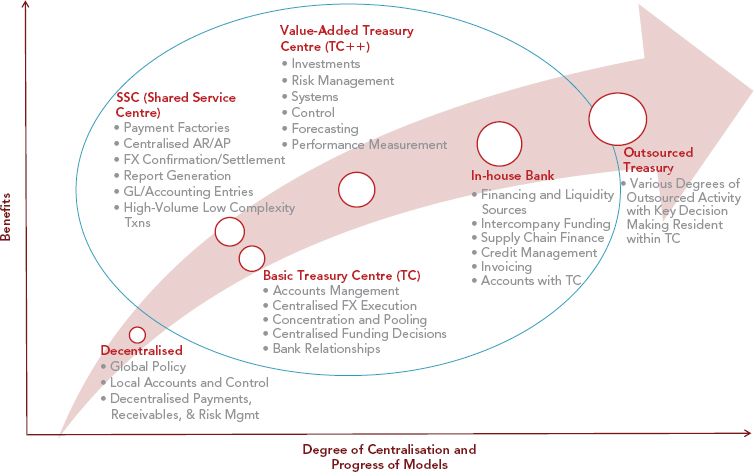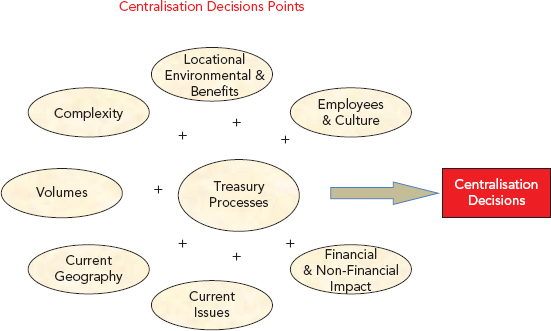Chapter Twenty Six
Centralisation
EARLIER IN THE BOOK WE introduced the concept and features of centralisation in Part One. We now look at the rationale, framework, and broad executional elements of centralisation.
RATIONALE FOR CENTRALISATION
In Part One, we mentioned that the key objectives for centralisation are to increase efficiency, increase control, and reduce cost related to Treasury activities. All three elements directly impact treasury’s performance. Elements of centralisation and various models were discussed in Chapter 2 (centralisation) and Chapter 5 (account structure). Here we provide the context for the centralisation decision, the process for decision making, and the criteria for evaluation.
Figure 26.1 presents various models of centralisation, which also were covered in Part One. Figure 26.2 shows some of the determinants of the centralisation decision. These determinants are discussed in more detail next.
FIGURE 26.1 Different Models of Centralisation

FIGURE 26.2 Determinants of the Centralisation Decision

- Treasury processes. Change or process improvement and implementation of new systems can be one of the drivers of the decision to centralise Treasury processes and controls. As cash visibility, process efficiency, and control systems become critical to ...
Get The Handbook of Global Corporate Treasury now with the O’Reilly learning platform.
O’Reilly members experience books, live events, courses curated by job role, and more from O’Reilly and nearly 200 top publishers.

